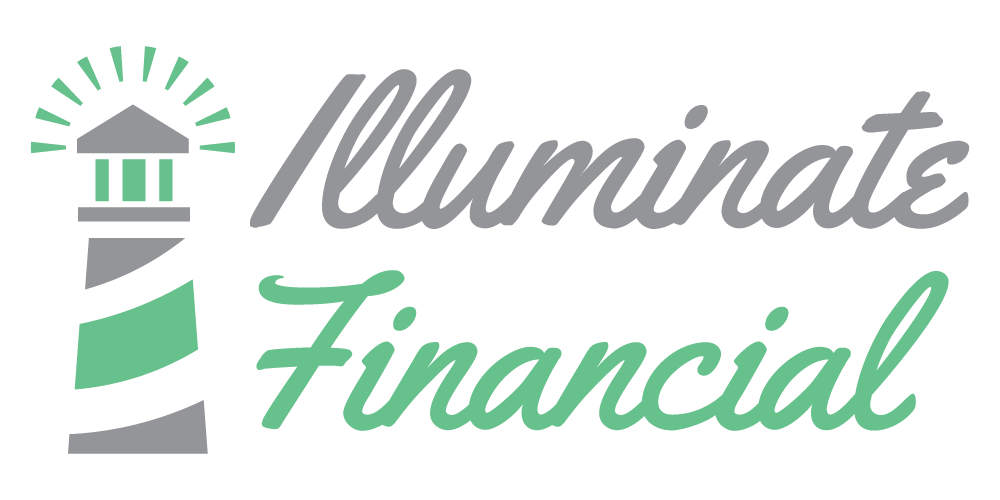Early the other morning, we set out on a short road trip. About halfway into our two-hour drive, we found ourselves in some serious fog. Fog for this part of the country is rare. And while I love it, it always makes me nervous. I hate not being able to see the big picture. But as my husband slowed his speed and navigated the low visibility…I started to think about the benefits of fog and the benefits of shrinking your focus.
When you’re in fog, you’re forced to narrow your focus because you can only see what’s immediately ahead. Sometimes managing your money sometimes requires a 30,000-foot view so you can see all the moving parts and adjust. But sometimes to get the best results from your money in the short-term, narrowing your focus is necessary. Let’s talk about three times you’ll see the benefits of fog in a financial sense, or when narrowing your focus will get the results you want.
Getting Out of Debt
If you are in debt, it can be hard to see a way out. Especially if you are taking a broad approach to your finances. The truth is high interest rate debt can cost you a lot over time. Interest payments are brutal. If getting out of debt is a high priority, you can see the benefits of fog and by narrowing your focus. This doesn’t mean that you can’t include money in the budget for fun or try to build your savings a little. But it does mean you need to do a few things to move the needle to get out of debt.
First, you need to have a clear picture of what you’re trying to pay off. To do this, you need to write down all your debts you want to focus on in one place. Write down who you owe, how much you owe, the interest rate, and the minimum monthly payment. This will help you prioritize your debts and get a clear picture of everything.
Prioritize Your Debts
Next, you’ll want to pick a debt repayment strategy that will work for you. The different strategies help you prioritize your debt repayments and give you a clear path forward. There are four common strategies to choose from when you’re working to get out of debt. For each strategy you pay your minimum monthly payment for all your debts, then you allocate any extra funds to your other debts according to the strategy you choose. These strategies are:
- The Debt Snowball. Arrange from lowest balance to highest and pay extra to smallest until it’s gone then move onto next smallest.
- The Debt Avalanche. Arrange debts from highest interest rate to lowest, excluding real estate. Then pay extra to the highest interest rate until it’s gone then move to the next highest.
- Kiyosaki Method/Highest Payment Method. Arrange your debts from highest payment to lowest, excluding real estate. Then pay extra towards the highest until it’s gone then move on to the next highest.
- Most Emotional Method. If you have any debts that are emotional, pay them off first then move on to other your debts.
For more information about these debt repayment methods, check out my blog post Four Steps to Crush Your Debt.
Find Extra Money to Put Towards Your Debts
Once you’ve figured out how to prioritize your debts, it’s time to find extra money to pay them off faster. Start by looking at your budget. Make sure that all your fixed expenses are covered first. These are the expenses that you must pay each month to keep your life moving. Typically, they are due on the same date and for the same amount. Include things like rent/mortgage, insurance premiums, utility bills (if they are the same each month), debt repayments, savings amounts, cell phone bills, subscriptions or membership fees, childcare expenses, costs for medication or other health and mental health services, and any other expenses that you pay each month and that cost the same amount.
Next add in your flexible expenses. Flexible expenses are expenses that you have each month, but for which the amounts may change. In this category include things like groceries, gas/transportation, eating out, experiences and entertainment, coffee or drinks with friends, gifts, and any other expenses you see come up regularly on your bank statements where the amounts vary from month to month.
Add your fixed and flexible expenses together. Compare them to your income. See if you have money left over at the end of each month that can go toward debt. If you don’t, or you want to find even more to put towards debt, look carefully at the expenses you outlined to see what you can trim or cut out completely. Remember cutting some expenses down or out doesn’t have to be permanent. It can be a temporary change while you focus on repaying your debts.
Track Your Progress
As you use the fog to your advantage and hyper-focus on your debt repayments, it’s helpful to track your progress. You can do this using an app, a spreadsheet, or even the notes feature on your phone. If you’re interested in a spreadsheet that you can use to track your debt repayments, I have two options for you!
The first is a debt repayment user’s guide and a spreadsheet with four tabs to help you organize your debts, pick the best repayment strategy, and track your progress. You can find it here.
If you’d just like a simple spreadsheet to track your debt repayments, you can download my simple debt repayment tracker. It allows you to track repayments on up to 5 debts on one convenient and easy to use spreadsheet. Get it here.
Building an Emergency Fund
Another time you might see the benefits of fog and a narrow focus with your finances is when you’re building an emergency fund. An emergency fund, as the name suggests, is savings that can be used when unexpected things happen. Notice that I didn’t say if unexpected things happen? That’s because one of the certainties of life is that we don’t always know what it will throw our way. Being prepared financially to take on situations that come your way without going into debt is a key to being financially stable.
I typically recommend clients save three to six months of take-home pay for emergencies. But if you don’t have any money set aside this can be daunting. So, aim first for $500. This is a good place to start. A recent study shows that 6 out of 10 employees in the US can’t cover a $500 emergency. Once you have $500 saved, aim for a $1,000 emergency fund. Then from there, work to build it to three to six months of take-home pay.
If you are working to build up your emergency fund, you may find the benefits of fog helpful. Instead of focusing on more than one financial goal as you build your emergency fund, narrow your focus. Put the money you must save only towards your emergency fund. This will help it grow faster and will help protect you from financial emergencies that come your way. This laser focus towards one goal will help you reach it faster. It and will allow the money to be there when you need it. Once you’ve established an emergency fund of at least one month of take-home pay, then if you have other goals, you’d like to work on you can broaden your focus to include emergency savings and savings towards other things. But being in the fog while you build your emergency fund initially will help you reach the goal quicker.
One way to make sure that your emergency fund is on track is to track your progress. And tracking it visually can really help. That’s why I’ve created a printable coloring sheet that can help you track your emergency fund savings. You can snag a free copy here!
Reaching Short-Term Savings Goals
Another time you will see the benefits of narrowing your focus is when you want to double down and reach your short-term savings goals. Short-term savings goals are usually those that you want to reach in a year or less. Short-term goals could be saving for a new smart watch, a spring break trip, or to get a dog. No matter what you’re saving for, sometimes narrowing your focus can help.
It’s not a bad idea to have a few savings goals over time. But, if you have too many, you’ll split your focus and your resources, and it will take you longer to reach all of them. So, if you have a short-term goal that comes up, it can be helpful, at least for a little while to focus all your savings on that goal to help you reach it faster. Reaching a short-term goal can help you get motivated to tackle other savings goals you may have. It can also grow your confidence in your ability to manage money because you have proof that you can do it successfully and reach a goal.
See How Much You Can Save
When you narrow your focus to see out a short-term savings goal, this means you’ll want to put all the money you have budgeted for saving towards that goal. If you aren’t sure how much you have to go towards your savings goal, you’ll want to go through a similar process to finding extra money to put towards your debt. First, you’ll want to look at your spending for the past 3-6 months and identify your fixed and flexible expenses. Compare these expenses to your income to see what money is leftover to save. If there isn’t any money left, you’ll want to trim your expenses where you can be able to reach your savings goal.
Track Your Progress
As you focus on a short-term saving goal, just like when you’re building your emergency fund or paying down debt, it’s important to track your progress. You can use your bank app, a money or savings tracking app, or even the notes app on your phone. If you’re ready to get serious about saving and want more tips and tricks to do it along with a spreadsheet to help you track your progress, you can grab a copy of my Savings Tracker here.
The Proof is in the Results
It can be hard to see the benefits of fog while you’re in it. And narrowing your focus, especially when you’re dealing with your finances can seem counterintuitive. But, in some circumstances it can help you reach your goals and build a stable foundation to grow from. While it’s always important to keep the big picture in mind, you also have limited resources. So, narrowing your focus to help yourself get out of debt, build up an emergency fund, or reach a short-term savings goal can be helpful. It can allow you to reach your goal quicker and then shift your focus back on to other things. If you try this strategy to reach some of your goals, you’ll find that you reach them faster and gain confidence in your ability to manage your money along the way!







